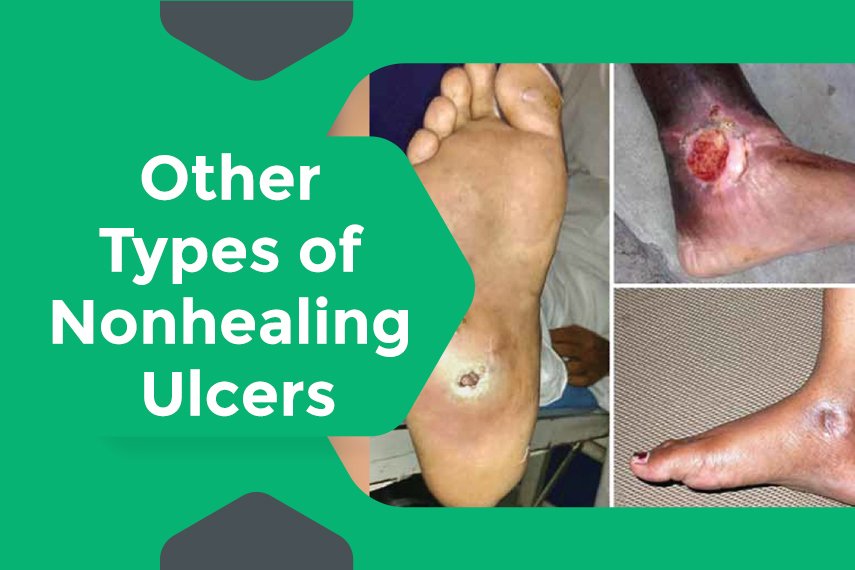Other Types of Nonhealing Ulcers

Introduction
Nonhealing ulcers are chronic wounds that do not respond to conventional treatments and fail to heal within an expected timeframe. These ulcers can result from various underlying conditions, including diabetes, vascular disease, and prolonged pressure. At Surat Diabetic Foot Care, we provide specialized treatments for various types of nonhealing ulcers, focusing on comprehensive care to promote healing and prevent complications.
Signs & Symptoms
-
Persistent wounds that do not heal
-
Redness, swelling, or warmth around the ulcer
-
Pain or discomfort in the affected area
-
Discharge or foul odor from the wound
-
Changes in skin color around the ulcer
When to Consult a Doctor
-
Wounds that have not healed within 4-6 weeks
-
Signs of infection, such as redness, warmth, swelling, or discharge
-
Increased pain or discomfort in the wound area
-
Changes in the size or appearance of the ulcer
-
Routine check-ups for chronic wound management
Treatment Offered
Specialized Dressings: Advanced wound dressings designed to promote healing and protect the ulcer from infection.
Debridement: Removal of dead or infected tissue to enhance healing.
Negative Pressure Wound Therapy (NPWT): Uses a vacuum dressing to promote healing in chronic wounds.
Biological Therapies: Includes growth factors, skin substitutes, and other biological treatments to accelerate healing.
Hyperbaric Oxygen Therapy (HBOT): Increases oxygen supply to the wound, promoting faster healing.
Comprehensive Wound Care Management: Personalized treatment plans tailored to each patient's specific needs.

